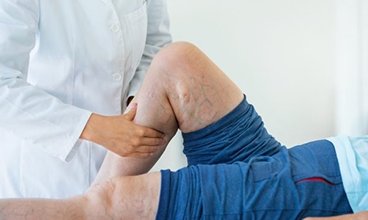Technology
What is a Venous Ultrasound?
Ultrasounds are a common diagnostic tool that can provide a wealth of information about the inside of our bodies. But what is a venous ultrasound, and when might you need one? In this post, we’ll explore what venous ultrasounds are used for and when they may be recommended.

A venous ultrasound is a non-invasive test used to diagnose venous insufficiency performed by a vascular surgeon in Encino, CA. This condition occurs when the veins are unable to properly pump blood back to the heart. As a result, blood can pool in the legs and cause a number of symptoms, including pain, swelling, and cramping. A venous ultrasound can help to determine the cause of these symptoms and develop an appropriate treatment plan. The test is quick and painless, and it can provide invaluable information for patients suffering from venous insufficiency.
When is a Venous Ultrasound Needed?
When your physician suspects that you have a venous disease such as deep vein thrombosis (DVT) or chronic venous insufficiency (CVI), a venous ultrasound might be in order. This test uses sound waves to produce images of the veins in your legs. The ultrasound will help your physician to determine the cause of your symptoms and to develop a treatment plan. In some cases, a venous ultrasound may also be used to monitor the progress of your condition.
What are its benefits?
A venous ultrasound can be used to evaluate a variety of conditions, including venous insufficiency, deep vein thrombosis (DVT), and varicose veins. Venous ultrasound can also be used to guide procedures such as venous ablation and venous stenting. The test is generally well tolerated and has few risks. The most common side effect is mild discomfort from the transducer (ultrasound wand) being pressed against your skin. Venous ultrasound is an important tool in the diagnosis and treatment of venous disorders. It is often used in conjunction with other tests, such as duplex ultrasound or MRI, to provide a more complete picture of your condition.
How to prepare for a venous ultrasound
A venous ultrasound is a painless and non-invasive test that involves using sound waves to map the veins in your body. The test is used to evaluate conditions such as venous insufficiency, deep vein thrombosis, and pulmonary embolism. Although the procedure is generally safe, there are a few things you can do to prepare for it and make sure that it goes smoothly.
First, be sure to wear loose-fitting clothing so that the ultrasound technician can easily access the area being examined. Second, avoid eating or drinking anything for at least two hours before the test, as this can affect the results. Finally, try to relax and stay calm during the procedure, as anxiety can make it harder for the technician to get accurate readings. By following these simple tips, you can ensure that your venous ultrasound goes smoothly and that you get the most accurate results possible.
What to expect during a venous ultrasound
The test is usually performed by a trained technician or doctors who will place a special probe on your skin. This probe then sends out high-frequency sound waves that bounce off your veins and produce images of them on a computer screen. The entire process usually takes less than 30 minutes and is relatively painless compared to findings which might be contributing to leg pain.
During the procedure, you may feel slight pressure from the probe as it moves across your skin. You may also hear faint beeping sounds coming from the machine. Once the vein procedure is completed under the guidance of a qualified vascular surgeon in Encino, CA, you will be able to return to your normal activities immediately.